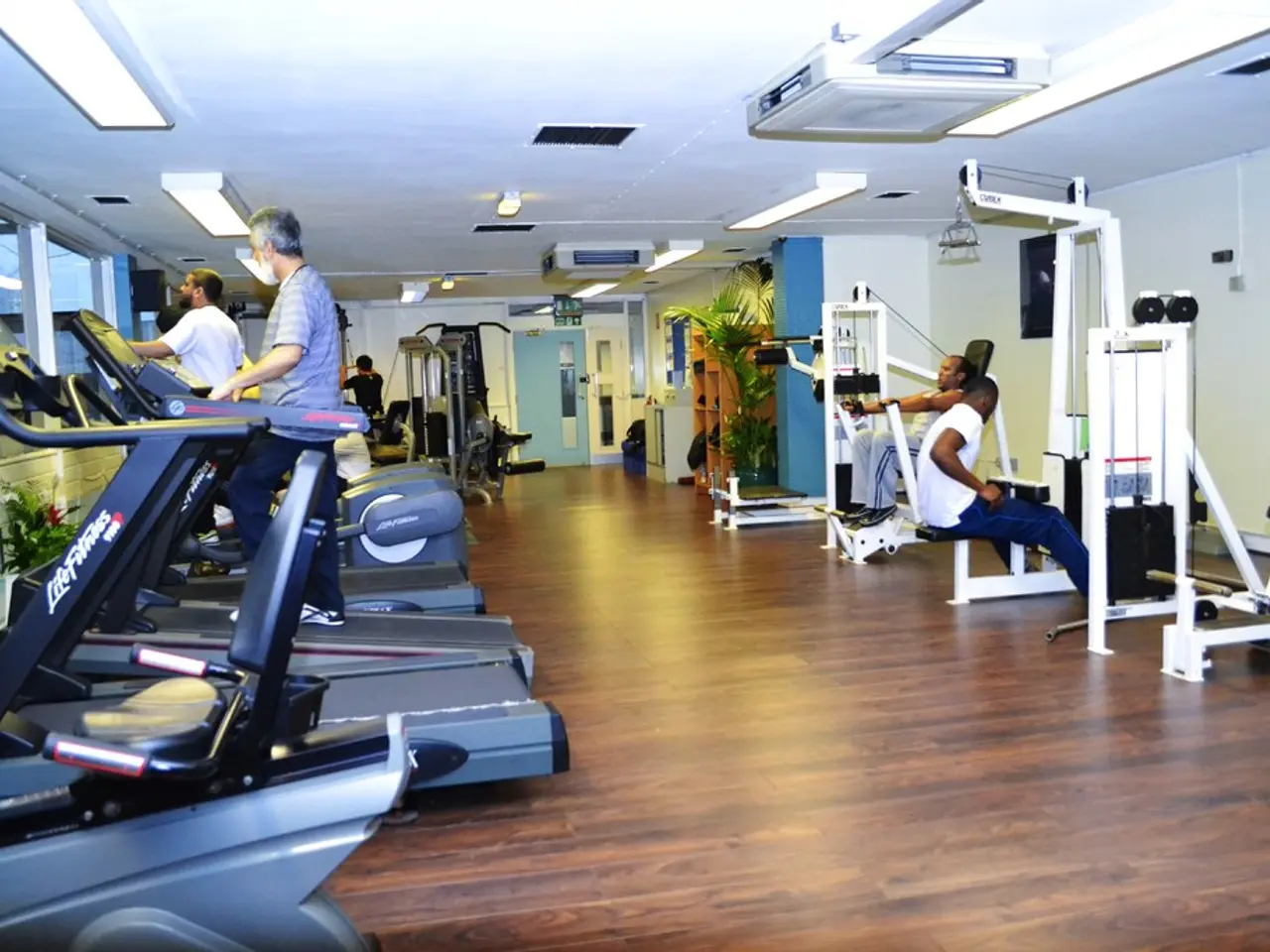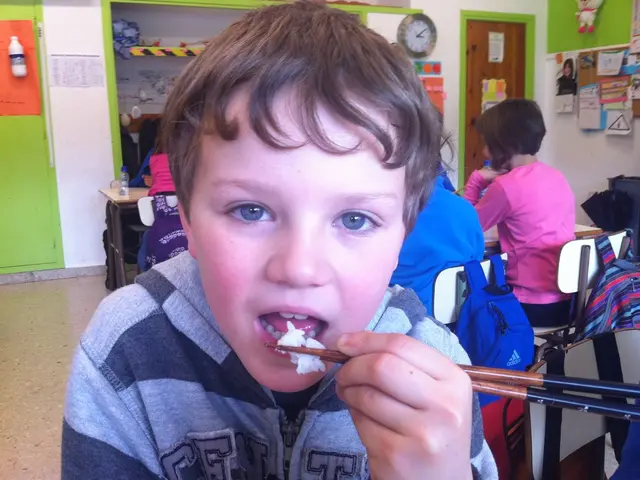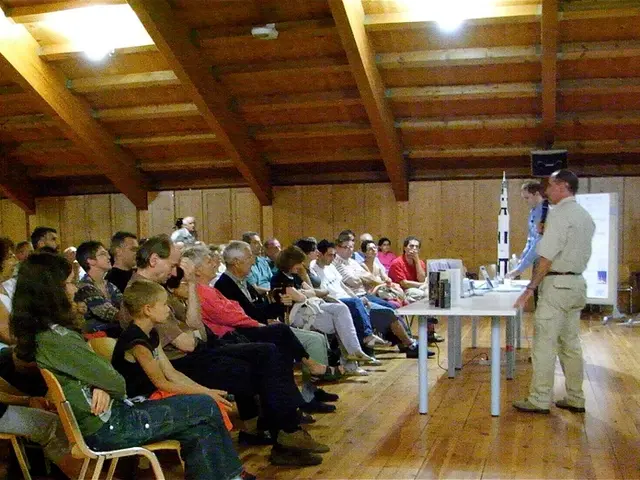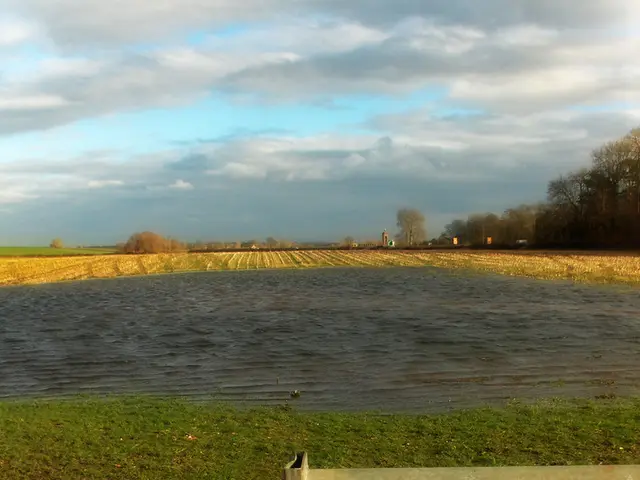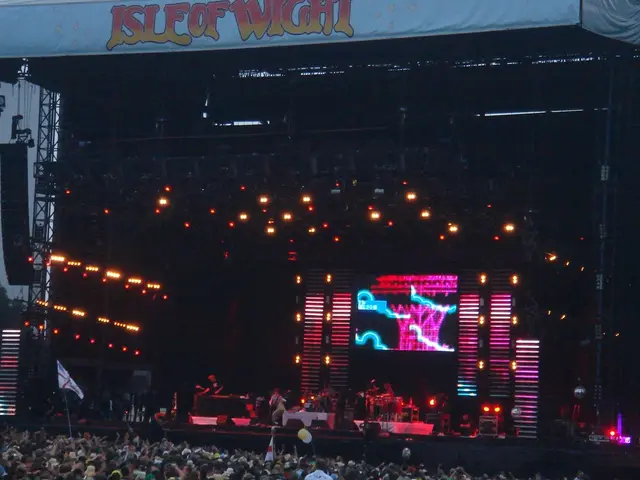Self-guided Physical Exercise Regimen for Whole-Body Training
In the realm of fitness, having a well-structured workout is crucial for achieving your goals. According to Noam Tamir, the owner of TS Fitness in New York City, programming a workout gives it a purpose. This article will delve into the basic movement patterns that can form the backbone of your workout routine.
Lower-Body Push
The lower-body push movement targets the lower-body powerhouse muscles, including the quadriceps, glutes, and calves, as well as the core. A popular example of this movement is the squat. For beginners, the Goblet squat, where one stands with feet hip-width apart and holds a weight at chest level, is a great starting point. As you advance, you might consider the Overhead squat, where one stands with feet hip-width apart and holds a weight overhead in each hand, keeping biceps in line with ears, and squats down while holding weights steady overhead.
Hip Hinge
The hip hinge movement involves flexion or extension of the hips and engages similar muscles as a squat but in a different way. The beginner exercise for this movement is the Romanian deadlift with dumbbells, where one stands with feet hip-width apart and bends weights toward the ground while keeping spine neutral. For a more advanced challenge, you might try the Single-leg Romanian deadlift with dumbbells, where one performs the exercise on one leg to work on balance.
Single-Leg Movement
The single-leg movement targets the legs, particularly the glutes and hamstrings, while engaging the core and stabilizers due to the increased balance required. The beginner exercise for this movement is the Reverse lunge, where one shifts weight to one side and steps the other foot back into a low lunge. As you advance, you can progress to the Lateral lunge, where one shifts weight to one side and steps to the side with the other foot, sending hips back and bending the knee while keeping the other leg straight.
Vertical Push
The vertical push movement targets the shoulders, upper and middle back, and arms. For beginners, the Half-kneeling overhead press is a suitable starting point. For a more advanced challenge, you might try the Standing overhead press.
Horizontal Pull
The horizontal pull movement builds strength in the upper and middle back, plus shoulders and triceps. The beginner exercise for this movement is the Single-arm bent-over row, where one bends at the waist and pulls a weight toward the body with one arm. For a more advanced challenge, you might try the Bent-over row.
Accessory Work
Work on the triceps, biceps, abs, thighs, and calves is often referred to as accessory work. The abs can be targeted with various core bodyweight exercises, while the arms can be targeted with a HIIT workout. For the thighs, exercises for inner and outer thighs can help shape and strengthen this area. The butt can be targeted with bodyweight butt moves.
Plyometrics
Plyometrics are power movements that can be added to a workout once an intermediate level is reached. These explosive exercises, such as box jumps and burpees, can help improve power, agility, and speed.
In conclusion, understanding these basic movement patterns can help you create a well-rounded workout routine that targets all the major muscle groups. Whether you're a beginner or an advanced fitness enthusiast, these movements provide a solid foundation for your fitness journey.
Read also:
- Peptide YY (PYY): Exploring its Role in Appetite Suppression, Intestinal Health, and Cognitive Links
- Toddler Health: Rotavirus Signs, Origins, and Potential Complications
- Digestive issues and heart discomfort: Root causes and associated health conditions
- House Infernos: Deadly Hazards Surpassing the Flames
